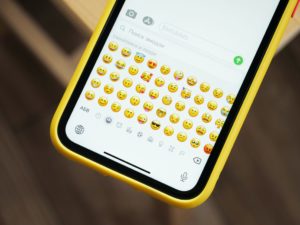“When a colleague of mine wanted to discuss a new and somewhat out-of-left-field research project that centered around the use of emojis in digital health care communication, I blanched. To the best of my recollection, I blurted, “Emojis have no place in medicine.” Early in residency, I was taught to never put anything extraneous in writing. Clinicians are supposed to provide facts, not give opinions or get poetic, and should always consider that anything they write may one day require an explanation in front of a jury. Maybe my colleague — who, to be fair, is not a clinician — didn’t know it, but that was why my reaction to his offer was less than enthusiastic.
A report several of my colleagues at PerfectServe published in February on the use of emojis in clinician-to-clinician communication nudged me to keep thinking about this topic. I was a bit surprised to learn that among the providers using emojis in medical settings, the exchanges were overwhelmingly polite and positive. This got the gears turning in my head, and my perspective started to shift a bit. I haven’t yet formed a strong opinion on whether emojis in communication among a care team are good or bad. Instead, I came up with some questions. Clinicians once had to respond to how privacy standards in health care affected texting, so why aren’t more health care providers and organizations having a conversation about emojis? And my favorite question: Health care providers understand what it means to have a good bedside manner. But as interactions become increasingly virtual and facilitated by technology, have we thought enough about digital bedside manner? The answer to that one is “no,” and I hope we can start rectifying that problem. As it turns out, emojis can help.”
Check out the full article regarding emojis, the risks and maintaining humanity in a digital world.
By
https://www.statnews.com/2022/05/04/should-clinicians-use-emojis-when-communicating-wih-each-other/


Recent Comments